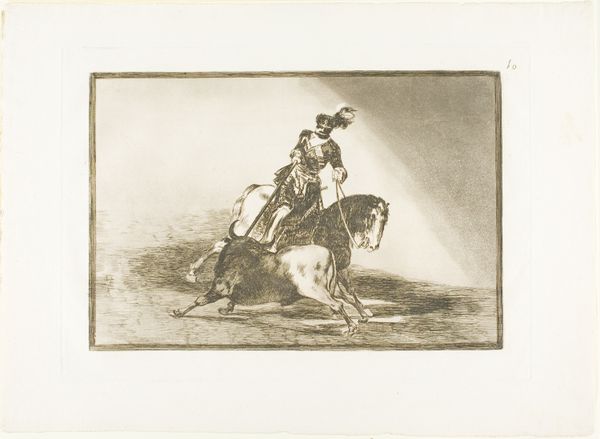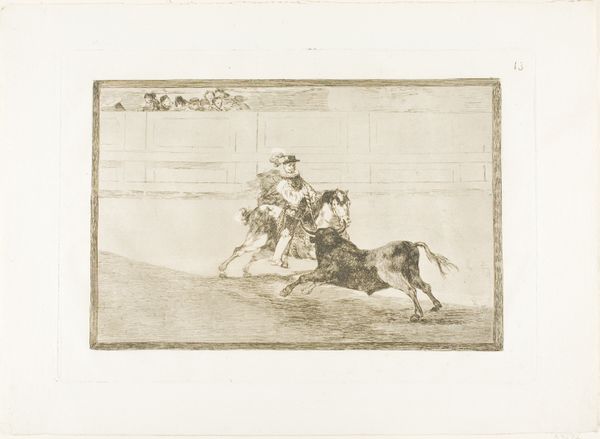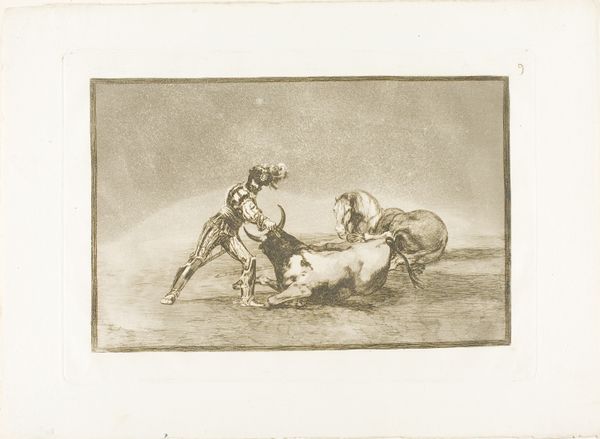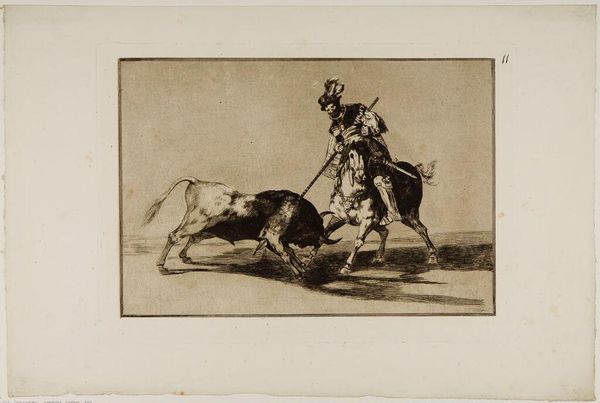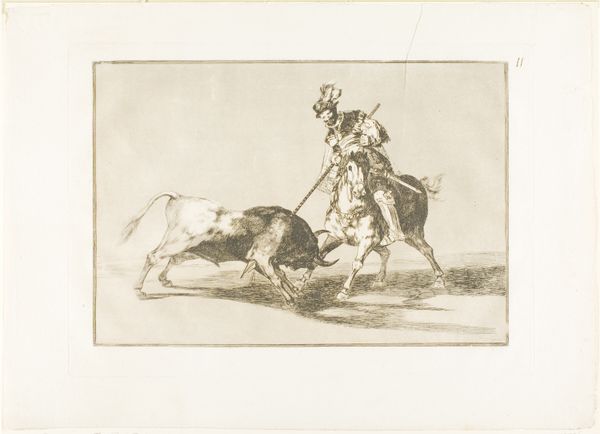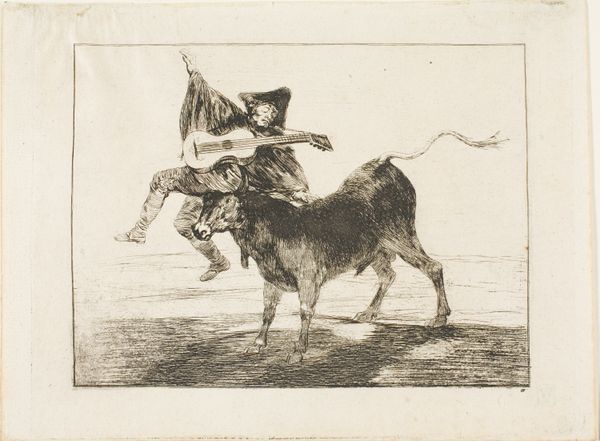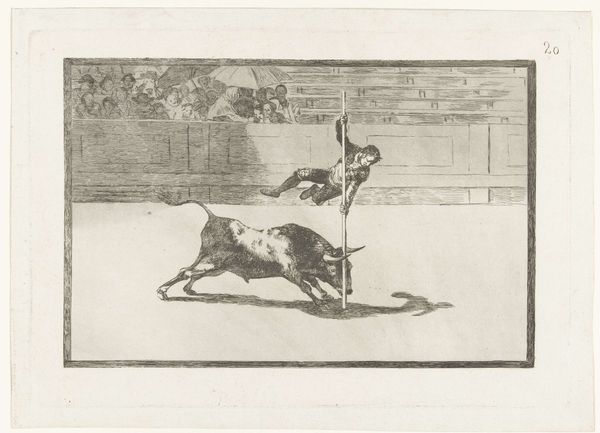
The Same Ceballos, Mounted on Another Bull, Breaks Short Spears in the Ring at Madrid, plate 24 from The Art of Bullfighting Possibly 1814 - 1816
0:00
0:00
drawing, print, etching, paper
#
drawing
#
narrative-art
# print
#
etching
#
figuration
#
paper
#
romanticism
#
history-painting
Dimensions: 204 × 312 mm (image); 245 × 355 mm (plate); 320 × 445 mm (sheet)
Copyright: Public Domain
Curator: Goya’s etching, “The Same Ceballos, Mounted on Another Bull, Breaks Short Spears in the Ring at Madrid,” possibly created between 1814 and 1816, offers a glimpse into the spectacle of bullfighting. It's currently held in the collection of The Art Institute of Chicago. Editor: What strikes me immediately is the incredible sense of movement, the dust seemingly kicked up by the animals, even captured in this monochrome print. There’s a real drama here, a tension. Curator: Indeed. This piece, part of Goya’s "The Art of Bullfighting" series, presents bullfighting not just as a sport, but as a culturally significant, albeit controversial, ritual. The series was likely created following the end of the Peninsular War and the restoration of the Bourbon monarchy, a period rife with social and political tensions in Spain. Editor: I see that, and I find myself questioning the ethics of portraying this display of dominance so graphically. Goya doesn't shy away from showing the inherent violence of it. The bull is in obvious distress and there’s this tension between spectacle and suffering. Does he intend to glorify or critique the sport? Curator: It’s a complex question. Some argue Goya is documenting a cultural phenomenon, presenting it as part of Spain’s heritage, warts and all. Others see it as a commentary on the brutality and the human condition. Goya’s sympathies are not overtly clear; perhaps his role is more as a reporter than an advocate. Editor: Right, there’s that tightrope between observation and endorsement. We also have to consider the power dynamics inherent in this display – the rider elevated and dominant on horseback above both bulls. This scene reads like a study in domination. Curator: Absolutely. Bullfighting has often been seen as a metaphor for the struggle between man and nature, civilization and primal instinct. The "matador" becomes a symbol of human control, though it's worth remembering this series predates the form bullfighting took in the 19th century. Editor: Thanks. It feels important to really see all the historical complexity as well as what stands out to a contemporary view that looks very differently at these interactions with animals. Curator: Thank you, it's interesting to look into this, especially at such a crossroads in history.
Comments
No comments
Be the first to comment and join the conversation on the ultimate creative platform.

